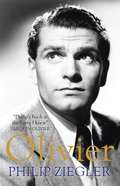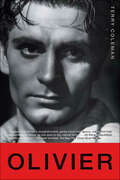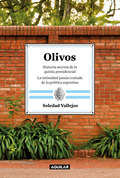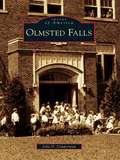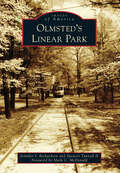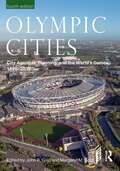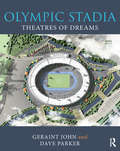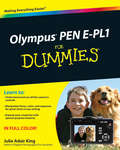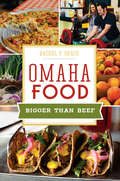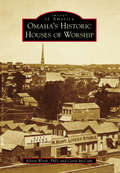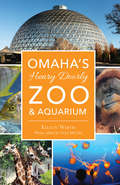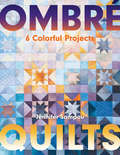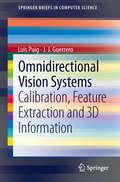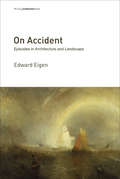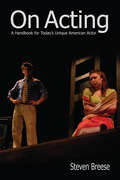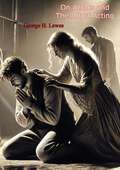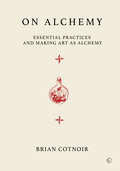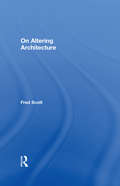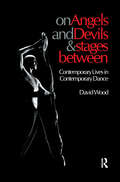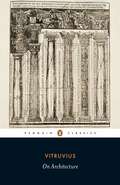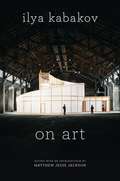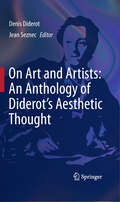- Table View
- List View
Olivier
by Philip ZieglerHollywood superstar; Oscar-winning director; greatest stage actor of the twentieth century. The era abounded in great actors - Gielgud, Richardson, Guinness, Burton, O'Toole - but none could challenge Laurence Olivier's range and power. By the 1940s he had achieved international stardom. His affair with Vivien Leigh led to a marriage as glamorous and as tragic as any in Hollywood history. He was as accomplished a director as he was a leading man: his three Shakespearian adaptations are among the most memorable ever filmed. And yet, at the height of his fame, he accepted what was no more than an administrator's wage to become the founding Director of the National Theatre. In 2013 the theatre celebrates its fiftieth anniversary; without Olivier's leadership it would never have achieved the status that it enjoys today. Off-stage, Olivier was the most extravagant of characters: generous, yet almost insanely jealous of those few contemporaries whom he deemed to be his rivals; charming but with a ferocious temper. With access to more than fifty hours of candid, unpublished interviews, Philip Ziegler ensures that Olivier's true character - at its most undisguised - shines through as never before.
Olivier
by Philip ZieglerHollywood superstar; Oscar-winning director; greatest stage actor of the twentieth century. The era abounded in great actors - Gielgud, Richardson, Guinness, Burton, O'Toole - but none could challenge Laurence Olivier's range and power. By the 1940s he had achieved international stardom. His affair with Vivien Leigh led to a marriage as glamorous and as tragic as any in Hollywood history. He was as accomplished a director as he was a leading man: his three Shakespearian adaptations are among the most memorable ever filmed. And yet, at the height of his fame, he accepted what was no more than an administrator's wage to become the founding Director of the National Theatre. In 2013 the theatre celebrates its fiftieth anniversary; without Olivier's leadership it would never have achieved the status that it enjoys today. Off-stage, Olivier was the most extravagant of characters: generous, yet almost insanely jealous of those few contemporaries whom he deemed to be his rivals; charming but with a ferocious temper. With access to more than fifty hours of candid, unpublished interviews, Philip Ziegler ensures that Olivier's true character - at its most undisguised - shines through as never before.
Olivier: The Story Of A Great Theatre From Kean To Olivier To Spacey
by Terry ColemanBased on exclusive, unprecedented access, the definitive biography of Sir Laurence Olivier, the dashing, self-invented Englishman who became the greatest actor of the twentieth centurySir Laurence Olivier met everyone, knew everyone, and played every role in existence. But Olivier was as elusive in life as he was on the stage, a bold and practiced pretender who changed names, altered his identity, and defied characterization. In this mesmerizing book, acclaimed biographer Terry Coleman draws for the first time on the vast archive of Olivier's private papers and correspondence, and those of his family, finally uncovering the history and the private self that Olivier worked so masterfully all his life to obscure. Beginning with the death of his mother at age eleven, Olivier was defined throughout his life by a passionate devotion to the women closest to him. Acting and sex were for him inseparable: through famous romances with Vivien Leigh and Joan Plowright and countless trysts with lesser-known mistresses, these relationships were constantly entangled with his stage work, each feeding the other and driving Olivier to greater heights. And the heights were great: at every step he was surrounded by the foremost celebrities of the time, on both sides of the Atlantic—Richard Burton, Greta Garbo, William Wyler, Katharine Hepburn. The list is as long as it is dazzling.Here is the first comprehensive account of the man whose autobiography, written late in his life, told only a small part of the story. In Olivier, Coleman uncovers the origins of Olivier's genius and reveals the methods of the century's most fascinating performer.
Olivos: Historia secreta de la quinta presidencial. La intimidad jamás contada de la política argentina
by Soledad VallejosLa Residencia Presidencial de Olivos, desde su donación hasta la actualidad, ha sido el espacio íntimo del poder en la Argentina. El libro de Soledad Vallejos retrata usos y costumbres de los distintos presidentes y sus familias, de trabajadores, de ocupantes ocasionales y visitantes, a partir de una rigurosa y amplia investigación, y con una prosa ágil y atrapante. La Quinta de Olivos es un lugar del que todos hablan pero pocos conocen. Allí Perón tenía un tigre, y Aramburu, perros que andaban por la casa, cerca de la cual hoy yace, enterrada bajo un árbol, una bóxer llegada de la Patagonia con los Kirchner. Durante los cacerolazos de diciembre de 2001, cientos de desconocidos treparon al muro y amagaron con invadir el predio mientras De la Rúa dormía. En el microcine, Alfonsín vio el partido que consagró a la Argentina en el mundial de México 86, y anunció un cambio de gabinete que haría historia. Cuando la Triple A asolaba las calles, Isabelita exhibió en una cripta los restos de Perón y Evita. La Residencia Presidencial también fue escenario del casamiento elegante de la hija de Illia, la vida familiar de Videla y las leyendas tejidas al calor del menemismo. Pero, ante todo, de la cotidianeidad del poder político, que custodia con discreción lo que pasa tras el muro rojo. Nadie había presentado hasta ahora una investigación similar. Con entrevistas, archivos históricos y recorridos por el lugar, Soledad Vallejos descubre en Olivos las historias secretas de los presidentes que habitaron en la Residencia y de los empleados que velan por ella, para relatar la vida íntima de la política argentina.
Olmsted Falls (Images of America)
by John D. CimpermanSettled in the early 1800s, Olmsted Falls was originally known as Kingston Township before being named Olmsted Falls, after Aaron Olmstead, first purchaser of the land from the Connecticut Land Company. It merged with the Village of Westview in 1971, and the City of Olmsted Falls was established in 1972. In 1989, longtime resident and realtor Clint Williams bought many buildings in the town center and restored and redeveloped them into an area known as Grand Pacific Junction, after the Grand Pacific Hotel, once the social center of the community. It is celebrated as one of the most authentic and revitalized town center historic districts in Ohio. Many of the buildings have been placed on the National Register of Historic Places.
Olmsted's Linear Park (Images of America)
by Jennifer J. Richardson Spencer Tunnell IIIn 1892, entrepreneur Joel Hurt invited Frederick Law Olmsted Sr. to Atlanta to design "an ideal suburb." Olmsted and his firm began designs and were in regular communication with Hurt. Members of the firm came to Atlanta during design and construction. Even with changing ownership, Olmsted's vision and plans were followed. The design became the last residential suburb designed by Olmsted--the only one in the Deep South. The centerpiece of the neighborhood is its segmented park. After reaching a peak of beauty in the 1930s, the park and neighborhood declined, and the park was threatened by an ill-conceived expressway. Olmsted and Hurt's dream of the linear park prevailed, and the park has been renovated to how it looked in its heyday. This is the story of how a handful of people preserved, protected, and enhanced the linear park so that it can be enjoyed for generations to come.
Olympic Cities: City Agendas, Planning, and the World’s Games, 1896 – 2032 (ISSN)
by John R. Gold Margaret M. GoldThe first edition of Olympic Cities, published in 2007, provided a pioneering overview of the changing relationship between cities and the modern Olympic Games. This substantially revised and much enlarged fourth edition builds on the success of its predecessors. The first of its three parts provides overviews of the urban legacy of the four component Olympic festivals: the Summer Games; Winter Games; Cultural Olympiads; and the Paralympics. The second part comprises systematic surveys of six key aspects of activity involved in staging the Olympics and Paralympics: finance; sustainability; the creation of Olympic Villages; security; urban regeneration; and tourism. The final part consists of ten chronologically arranged portraits of host cities from 1960 to 2032, with complete coverage of the Summer Games of the twenty-first century.As controversy over the growing size and expense of the Olympics, with associated issues of democratic accountability and legacy, continues unabated, this book’s incisive and timely assessment of the Games’ development and the complex agendas that host cities attach to the event will be essential reading for a wide audience. This will include not just urban and sports historians, urban geographers, event managers, and city planners, but also anyone with an interest in the staging of mega-events and concerned with building a better understanding of the relationship between cities, sport, and culture.
Olympic Stadia: Theatres of Dreams
by Dave Parker Geraint JohnOlympic Stadia provides a comprehensive account of the development of stadia including but not limited to: developments in running tracks, the introduction of lighting, improvements in spectator viewing standards and the introduction of roofs. Written by a world-renowned expert on sports architecture, the book: Systematically analyses every stadium from Athens 1896 to Tokyo 2020 Provides drawings, plans, elevations, photographs and illustrations in full colour Considers the fundamental changes wrought by the incorporation of the Paralympic Games Looks at the impact on host cities and their urban infrastructure, and considers the long-term legacies and massive investments that Olympic stadia require Explores the effects of the demands of the world’s TV broadcasters. An invaluable and beautiful resource for practical insight and inspiration, this book makes essential reading for anyone interested in Olympic stadia.
Olympus PEN E-PL1 For Dummies
by Julie Adair KingA friendly guide to the Olympus E-PL1, the latest trend in digital camerasHybrids offer the flexibility of interchangeable lenses and a large sensor in a smaller body. The Olympus E-PL1 lightens your load without sacrificing shooting power and this fun and friendly guide helps you better understand your camera's controls, features, and potential. Veteran author Julie Adair King presents you with examples on how to use your camera's main functions in order to create effective and memorable digital photos.Explains how to work with lenses and shoot in auto modeCovers the on-board controls and situational shootingAddresses manipulating focus and color controlsDiscusses printing, posting online, and other ways to share imagesGet started shooting with Olympus E-PL1 For Dummies!
Omaha Food: Bigger than Beef
by Rachel P. GraceWithout its once-booming livestock industry, Omaha would be a very different place. Although it was originally known for its legendary steakhouses, today's eateries exceed the influence of cattle. Out of a rich foundation of traditions like steaks with hash browns and mostaccioli, Reubens and South O dive bars grew a creative culinary community with a fiercely loyal following. Today, Omaha is a platform for nationally recognized chefs. Home to one of America's greenest restaurants and the recent birthplace of the Rounder, the story of Omaha food is ripe for the telling. Author Rachel P. Grace celebrates the scene in this unapologetically witty culinary adventure.
Omaha's Historic Houses of Worship
by Carol Mccabe Eileen WirthFrom the towers of St. Cecilia's Cathedral to the Buddhist statuary garden visible from North Omaha's Sorensen Expressway, Omaha's physical expressions of worship represent the world's major faiths. Images of America: Omaha's Historic Houses of Worship tells the story of how Omahans since the 1850s have created religious buildings and landmarks all over the city as expressions of their beliefs and identities. Images in this book include buildings in the National Register of Historic Places and on local landmarks lists. Through historical religious photographs, readers will learn the colorful tales of the buildings' creations and see how today's Omahans are building the next chapter in the ongoing story of the city's religious landscape.
Omaha’s Henry Doorly Zoo & Aquarium (Landmarks)
by Carol Mccabe Eileen WirthLong ranked as one of the top zoos in America and even the world, Omaha’s Henry Doorly Zoo & Aquarium’s history has remained untold, until now. Beginning as little more than a menagerie, the zoo transformed into a spectacular attraction that now draws two million visitors per year. Supporters responded to innovative features such as the iconic desert dome, the new African Grasslands exhibit, the indoor jungle and the all-encompassing aquarium. More than just a showcase, the zoo also supports renowned wildlife conservation and research programs that help preserve endangered species ranging from coral reefs to tigers. Author Eileen Wirth celebrates the history and promising future of the landmark that continues to elicit great local pride.
Ombré Quilts: 6 Colorful Projects
by Jennifer SampouSew modern quilts that illuminate your life with the help of gorgeous ombré fabrics. In this book, designer Jennifer Sampou shows you how to make ombré fabric work for you, with six brilliant quilt projects featuring her Sky Collection fabric. Easy large-scale piecing shows the entire ombré gradation, while smaller-pieced quilts let colors dance and glow in hundreds of hues, tints, and tones! With a single fabric containing subtle shifts from pale to dark, color feels exciting and new again. Take advantage of digitally-printed yardage that&’s now widely available, with hundreds of colors printed on a single yard.
Omnidirectional Vision Systems
by Luis Puig J J GuerreroThis work focuses on central catadioptric systems, from the early step of calibration to high-level tasks such as 3D information retrieval. The book opens with a thorough introduction to the sphere camera model, along with an analysis of the relation between this model and actual central catadioptric systems. Then, a new approach to calibrate any single-viewpoint catadioptric camera is described. This is followed by an analysis of existing methods for calibrating central omnivision systems, and a detailed examination of hybrid two-view relations that combine images acquired with uncalibrated central catadioptric systems and conventional cameras. In the remaining chapters, the book discusses a new method to compute the scale space of any omnidirectional image acquired with a central catadioptric system, and a technique for computing the orientation of a hand-held omnidirectional catadioptric camera.
On Accident: Episodes in Architecture and Landscape (Writing Architecture)
by Edward EigenEngaging essays that roam across uncertain territory, in search of sunken forests, unclassifiable islands, inflammable skies, plagiarized tabernacles, and other phenomena missing from architectural history.This collection by “architectural history's most beguiling essayist” (as Reinhold Martin calls the author in the book's foreword) illuminates the unfamiliar, the arcane, the obscure—phenomena largely missing from architectural and landscape history. These essays by Edward Eigen do not walk in a straight line, but roam across uncertain territory, discovering sunken forests, unclassifiable islands, inflammable skies, unvisited shores, plagiarized tabernacles. Taken together, these texts offer a group portrait of how certain things fall apart.We read about the statistical investigation of lightning strikes in France by the author-astronomer Camille Flammarion, which leads Eigen to reflect also on Foucault, Hamlet, and the role of the anecdote in architectural history. We learn about, among other things, Olmsted's role in transforming landscape gardening into landscape architecture; the connections among hedging, hedge funds, the High Line, and GPS bandwidth; timber-frame roofs and (spider) web-based learning; the archives of the Houses of Parliament through flood and fire; and what the 1898 disappearance and reappearance of the Trenton, New Jersey architect William W. Slack might tell us about the conflict between “the migratory impulse” and “love of home.” Eigen compares his essays to the “gathering up of seeds that fell by the wayside.” The seedlings that result create in the reader's imagination a dazzling display of the particular, the contingent, the incidental, and the singular, all in search of a narrative.
On Acting: A Handbook for Today's Unique American Actor
by Steven BreeseTo support a new generation of actors/acting teachers by coupling fresh ideas and new approaches with the best proven methods and practices. On Acting is written primarily for the contemporary American actor. It strives to address the acting process with an eye toward the performance culture and requirements that exist today. It is a book for the new twenty-first century artist—the serious practical artist who seeks to pursue a career that is both fulfilling and viable.The text features a balance of philosophy, practical advice, anecdotal evidence/experiences and a wide variety of acting exercises/activities. Also included is the short Steven Breese play "Run. Run. Run Away" and an example of a scene score from that play.
On Actors and The Art of Acting [Second Edition]
by George H. LewesDelve into the captivating world of theater with George H. Lewes' insightful and eloquent work, "On Actors and The Art of Acting." This timeless book offers a profound exploration of the craft of acting and the unique qualities that distinguish great actors, making it an essential read for theater enthusiasts, students, and practitioners.George H. Lewes, a prominent 19th-century philosopher, critic, and theater aficionado, brings his deep understanding of the performing arts to this comprehensive study. "On Actors and The Art of Acting" examines the techniques, challenges, and triumphs of acting, providing a detailed analysis of what it takes to excel on stage. Lewes’ reflections are grounded in his extensive experience and keen observations of some of the most renowned actors of his time.The book is divided into insightful essays that cover various aspects of the acting profession. Lewes discusses the importance of emotional authenticity, the physicality of performance, and the intellectual rigor required to interpret and inhabit a character. He also explores the dynamics between actors and audiences, shedding light on the symbiotic relationship that breathes life into theatrical performances.One of the highlights of "On Actors and The Art of Acting" is Lewes’ vivid portraits of famous actors and actresses, including contemporaries like Edmund Kean, William Charles Macready, and Sarah Siddons. Through these case studies, he illustrates the diverse approaches and distinctive styles that contribute to their lasting legacy in the theater world."On Actors and The Art of Acting" is an invaluable resource for anyone seeking to deepen their appreciation of theatrical performance or to gain insights into the art and craft of acting. George H. Lewes' thoughtful analysis and rich descriptions make this book a timeless tribute to the enduring magic of the theater.
On Alchemy: Essential Practices and Making Art as Alchemy
by Brian Cotnoir&“There's no sounder or more sage guide to alchemy – the practice and the philosophy – than Brian Cotnoir. This wise, lucidly-written book … offers explanations and exercises that will be of immeasurable help to anyone hoping to navigate this enormous field.&” - Sukhdev SandhuAlchemy is both the art of transmuting base metal into gold and a powerful metaphor for spiritual transformation and creativity. This simple guide contains all you need to know to become an alchemist – to decode the most complex alchemical texts, to unite your inner spiritual work with your outer work, and to take up laboratory alchemy if you so wish.Whether you are a beginner intrigued about the possibility of spiritually enriching your life and creativity, or a practising alchemist looking for the key to difficult texts, On Alchemy invites you to embark on a profound journey of personal change. It is full of meditations, visualizations and other practices to guide you on your way, from using geometry to purify your inner eye, to questioning the gods in your dreams, to using a circulation and distillation apparatus.
On Altering Architecture
by Fred ScottBringing together interior design and architectural theory, this exciting text looks at the common practices of building alteration, reconsidering established ideas and methods, to initiate the creation of a theory of the interior or interventional design. Fred Scott examines in-depth case studies of interventional design from architectural history across the world – examples discussed are taken from the States, Europe and Japan. Scott expands and builds on the ideas of Viollet-le-Duc, structuralism and other thoughts to layout criteria for an art of intervention and change. The book draws on the philosophy of conservation, preservation and restoration, as well as exploring related social and political issues. For those in professions of architecture and interiors, town planners, and students in architecture and art schools, On Altering Architecture forms a body of thought that can be aligned and compared with architectural theory.
On Angels and Devils and Stages Between: Contemporary Lives in Contemporary Dance (Choreography and Dance Studies Series #Vol. 19)
by David WoodFirst published in 1999. Routledge is an imprint of Taylor & Francis, an informa company.
On Animation: The Director's Perspective Vol 1
by Ron DiamondBe a fly on the wall as industry leaders Bill Kroyer and Tom Sito take us through insightful face-to-face interviews, revealing, in these two volumes, the journeys of 23 world-class directors as they candidly share their experiences and personal views on the process of making feature animated films. The interviews were produced and edited by Ron Diamond. Your job is not to be the one with the answers. You should be the one that gets the answers. That’s your job. You need to make friends and get to know your crew. These folks are your talent, your bag of tricks. And that’s where you’re going to find answers to the big problems - Andrew Stanton It’s hard. Yet the pain you go through to get what you need for your film enriches you, and it enriches the film. – Brenda Chapman Frank and Ollie always used to say that great character animation contains movement that is generated by the character’s thought process. It can’t be plain movement. – John Lasseter The beauty of clay is that it doesn’t have to be too polished, or too smooth and sophisticated. You don’t want it to be mechanical and lifeless. – Nick Park The good thing about animation is that tape is very cheap. Let the actor try things. This is where animation gets to play with spontaneity. You want to capture that line as it has never been said before. And, most likely, if you asked the actor to do it again, he or she just can’t repeat that exact performance. But you got it. – Ron Clements
On Animation: The Director's Perspective Vol 2
by Ron DiamondOn Animation: The Director's Perspective is a collection of interviews with 23 animated feature-film directors. These extensive interviews were conducted over the past several years by filmmakers and educators (and peers to the directors interviews) Tom Sito and Bill Kroyer. Interviews cover in-depth discussion of each director's career -- focusing on their creative development, their films, lesson learned and advice. The interviews were edited and produced by Ron Diamond.Key FeaturesInterviews with the greatest living legends in animationOffers profound insight into the creative process of these giantsGrants advice and lessons for inspiring animators
On Architecture
by VitruviusIn De architectura (c.40 BC), Vitruvius discusses in ten encyclopedic chapters aspects of Roman architecture, engineering and city planning. Vitruvius also included a section on human proportions. Because it is the only antique treatise on architecture to have survived, De architectura has been an invaluable source of information for scholars. The rediscovery of Vitruvius during the Renaissance greatly fuelled the revival of classicism during that and subsequent periods. Numerous architectural treatises were based in part or inspired by Vitruvius, beginning with Leon Battista Alberti's De re aedificatoria (1485).
On Art
by Matthew Jesse Jackson Ilya KabakovDuring the 1960s and 1970s, the Russian conceptual artist Ilya Kabakov was a galvanizing figure in Moscow's underground art community, ultimately gaining international prominence as the “leader” of a band of artists known as the Moscow Conceptual Circle. Throughout this time, he created texts that he would distribute among his friends, and by the late 1990s his written production amounted to hundreds of pages. Devoted to themes that range from the “cosmism” of pre-Revolutionary Russian modernism to the philosophical implications of Moscow’s garbage, Kabakov’s handmade booklets were typed out on paper, then stapled or sewn together using rough butcher paper for their covers. Among these writings are faux Socialist Realist verses, theoretical explorations, art historical analyses, accompaniments to installation projects, and transcripts of dialogues between the artist and literary theorists, critics, journalists, and other artists. This volume offers for the first time in English the most significant texts written by Kabakov. The writings have been expressly selected for this English-language volume and there exists no equivalent work in any language.
On Art and Artists: An Anthology of Diderot's Aesthetic Thought
by Denis Diderot John S. Glaus Jean SeznecChance ordained that Denis Diderot (1713-1784) was not only a philosopher, playwright and writer, but also a salonnier. In other words, an art critic. In 1759, his friend Grimm entrusted him with a project that forced him to acquire "thoughtful notions concerning painting and sculpture" and to refine "art terms, so familiar in his words yet so vague in his mind". Diderot wrote artistic reviews of exhibitions - Salons - that were organized bi-annually at the Louvre by the Académie Royale de Peinture et de Sculpture. These reviews, published in the Correspondence Littéraire, were Diderot's unique contribution to art criticism in France. He fulfilled his task of salonnier on nine occasions, despite occasional dips in his enthusiasm and self-confidence. Compiled and presented by Jean Szenec, this anthology helps the contemporary reader to familiarize himself with Diderot's aesthetic thought in all its greatness. It includes eight illustrations and is followed by texts from Jean Starobinski, Michel Delon, and Arthur Cohen. 'On Art and Artists' is translated by John Glaus, professor of French and an amateur expert of the XVIIIth century.
